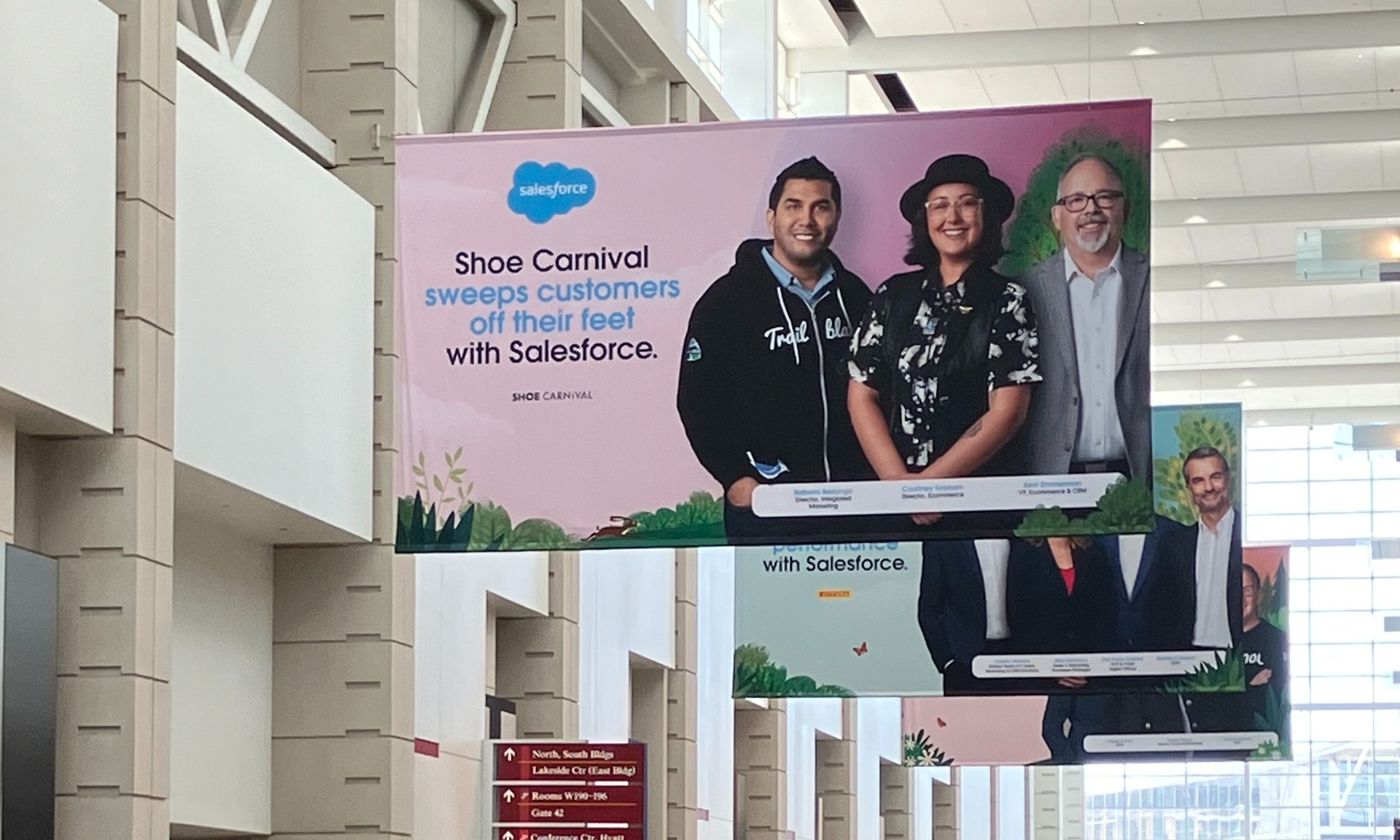MARKETING
The Types of Content on Social Media [New Data]
![The Types of Content on Social Media [New Data] The Types of Content on Social Media [New Data]](https://articles.entireweb.com/wp-content/uploads/2023/02/The-Types-of-Content-on-Social-Media-New-Data.pngkeepProtocol.png)
According to our 2023 Marketing Strategy Trends Report, 42% of marketers leverage social media, and it has the highest ROI of any channel. With this in mind, sharing content on social media is a no-brainer.
Whether you’re looking for a strategy refresh or leveraging the channel for the first time, this post is your guide to the different types of social media content and the benefits it’ll bring to your business.
Different Types of Social Media Content
1. Video (short form, specifically)
Short-form video is the top trend marketers will be leveraging in 2023, and HubSpot’s 2023 Social Media Trends Report found that it is the highest ROI format for social media marketing.
![The Types of Content on Social Media [New Data] graph displaying the social media format with highest ROI](https://articles.entireweb.com/wp-content/uploads/2023/02/The-Types-of-Content-on-Social-Media-New-Data.jpg) With this in mind, creating short-form videos is a worthwhile investment, and some common examples are TikTok videos, Instagram Reels, and YouTube shorts. The TikTok below is a video from Topicals, a skincare company, which talks about the different uses for one of its products.
With this in mind, creating short-form videos is a worthwhile investment, and some common examples are TikTok videos, Instagram Reels, and YouTube shorts. The TikTok below is a video from Topicals, a skincare company, which talks about the different uses for one of its products.
Long-form video is also popular, but it doesn’t come close to the ROI of short-form. Live video gained steam during the pandemic, allowing people to participate in events remotely. Twitch is a popular live-streaming platform where people can interact with their favorite creators in real time.
2. Audio chat and live rooms.
Audio chat is another type of social media content, and many platforms have native features like Twitter Spaces, LinkedIn Live, or Facebook Live Audio. It’s also the top content type marketers plan to leverage for the first time in 2023.
![The Types of Content on Social Media [New Data] graph displaying the format social media marketers plan to leverage for the first time in 2023](https://articles.entireweb.com/wp-content/uploads/2023/02/1676802182_628_The-Types-of-Content-on-Social-Media-New-Data.jpg) This makes sense, as audio chat rooms let brands directly communicate with audiences and develop closer relationships than seeing a billboard or watching a YouTube video. And, during a time when customers value connections with brands more than ever, audio chat rooms are a valuable tool.
This makes sense, as audio chat rooms let brands directly communicate with audiences and develop closer relationships than seeing a billboard or watching a YouTube video. And, during a time when customers value connections with brands more than ever, audio chat rooms are a valuable tool.
Audio chat rooms are trendy among Gen Z. A Spotify study found that 80% of Gen Z enjoy audio content because it allows them to express their individuality and explore different sides of their personalities.
3. Content that represents brand values.
Content that represents brand values is anything that shares what your company stands for in addition to and outside of the products you sell, such as commitments to sustainable production practices, treatment of employees, or any causes you support.
Consumers care more than ever about what the brands they buy from stand for and the values they have. They want to know the causes that businesses support and the commitments made to bettering the world.
The image below is a Tweet from Ben & Jerry’s that expressed its commitment to environmentalism and combating climate change, which aligns with its stated core values of environmental protection.
![The Types of Content on Social Media [New Data] ben jerrys](https://articles.entireweb.com/wp-content/uploads/2023/02/1676802182_189_The-Types-of-Content-on-Social-Media-New-Data.jpg)
Brand value content helps you draw in people whose values align with yours, and marketers also say that it has the 5th biggest ROI of any trend. 44% of marketers are also already posting this type of social media content.
4. User-generated content.
User-generated content (UGC) is content your audience creates that features your business/brand that is not paid for by your business. For example, someone shares a non-sponsored TikTok about how much they like your product or posts a picture wearing your clothing and tags your business.
This type of content is great to share on social media because it helps your audiences see that people use and like your products, vouching for you in a real-life way.
UGC pays off, as customers trust reviews from friends and family more than they trust branded ads, and 79% of people say UGC highly impacts their purchase decisions, considerably more so than branded content and influencer content.
When you do use UGC, the platforms it performs best on are Instagram, Facebook, and YouTube.
5. Funny, trendy, and relatable content.
Funny, trendy, and relatable content on social media can be hopping on viral memes, relating them to your business, and using trending hashtags or sounds. This type of content requires awareness of what’s happening on social media, cultural moments, and current events and creating buzzy content related to that.
36% of marketers already share funny, trendy, and relatable content on social media, and 66% say that funny content is the most effective, followed by relatable, trendy content. Consumers say that funny content is the most memorable.
6. Shoppable content.
Shoppable social media content allows consumers to browse through products on your accounts, discover things they like, and even make a purchase without leaving the app. The image below is an Instagram storefront for Ink Meets Paper, where someone can browse its products, find what interests them, and make a purchase.
![The Types of Content on Social Media [New Data] facebook shops-1](https://articles.entireweb.com/wp-content/uploads/2023/02/1676802183_66_The-Types-of-Content-on-Social-Media-New-Data.jpg)
This is a valuable content type as social shopping is currently on the rise, and consumers are discovering new products and buying products on social media apps more than ever before.
In fact, social media is the most popular way for Gen Z, Millennials, and Gen X to discover new products, and over 1 in 5 have made an in-app purchase in the past three months. If you share shoppable content, the most effective platforms for selling in-app are Instagram and Facebook.
![The Types of Content on Social Media [New Data] most effective selling](https://articles.entireweb.com/wp-content/uploads/2023/02/1676802183_561_The-Types-of-Content-on-Social-Media-New-Data.jpg)
7. Educational content.
Educational content shares helpful information with audiences that helps them reach their goals and meet their needs. Educational content can come in infographics, videos, text-based posts, images — any of the content types we discussed in this post.
HubSpot often shares educational content through YouTube videos, where viewers can learn more about concepts of interest. The video below is a recent video that educates viewers on creating a brand style guide.
8. High-quality images
Images are a must on social media platforms, capturing attention and drawing people in. Images can be things like high-quality product photos or even a trending meme that relates to your business.
Our recent Marketing Strategy Report found that 47% of marketers leverage images as a media format and work well on all social media platforms.
9. Text-based content
We see text-based content on social media every day, like Tweets or thought-leadership posts on LinkedIn. The primary goal of text-based content is to share insight through text rather than an image or video. For example, you can pair a Tweet with an eye-catching image, but the point of the post is in the text.
Blogs are popular text-based content where people read longer posts and discover helpful information. Some popular types of blog posts are:
- How-to posts that introduce a problem, offer a solution, and discuss steps to reach a desired result.
- Lists posts that focus on a particular topic, offer several points, and provide a brief conclusion.
- What-posts that provide further information on a specific topic, with many articles surrounding comparisons of one thing to another.
- Why-posts that typically provide readers with a reason or purpose and provide details that support a focused conclusion.
10. Infographics
Infographics are a content type with the shareability and visual appeal of photos but are filled with helpful data and information. It’s an impactful form of social media content and educational content.
The image below is a post from HubSpot’s Instagram account that is an infographic that informs viewers about the most effective traits of a sales leader.
![The Types of Content on Social Media [New Data] infographic-2](https://articles.entireweb.com/wp-content/uploads/2023/02/1676802183_848_The-Types-of-Content-on-Social-Media-New-Data.jpg)
Infographics are effective, too, with 56% of marketers that regularly use them saying it’s their most effective content type.
11. Ephemeral/disappearing content.
Ephemeral/disappearing content is content that only stays up for a certain amount of time, like Instagram Stories that disappear after 24 hours. Users only have a set period to engage with it, so they might be more eager to keep track of your profiles and keep returning to experience what you share.
Creating quizzes and polls in your Stories is a great way to leverage this type of content. People only have a certain amount of time to respond, generating excitement and immediate action and inspiring respondents to come back and see results.
Repurposing Content Is Still A Valuable Strategy
Social media marketers say they use an average of four platforms, each with its best practices and norms to follow. It can be challenging to create individual pieces of content for every single platform, so many marketers share similar content on each platform but repurpose it to fit the tone and requirements of each one.
![The Types of Content on Social Media [New Data] repurpose](https://articles.entireweb.com/wp-content/uploads/2023/02/1676802183_782_The-Types-of-Content-on-Social-Media-New-Data.png) The key to success, however, is repurposing content, not resharing. People don’t look fondly at brands that share the exact same thing on each platform. 48% of marketers already share similar content across platforms with tweaks to make it more relevant to the platform’s demands.
The key to success, however, is repurposing content, not resharing. People don’t look fondly at brands that share the exact same thing on each platform. 48% of marketers already share similar content across platforms with tweaks to make it more relevant to the platform’s demands.
Want More Social Media Insights?
Learn more about the State of Social media with more of this data, videos, and exclusive industry tips on our State of Social Media Hub— which will come with a free downloadable resource.
MARKETING
YouTube Ad Specs, Sizes, and Examples [2024 Update]
![YouTube Ad Specs, Sizes, and Examples [2024 Update] YouTube Ad Specs, Sizes, and Examples](https://articles.entireweb.com/wp-content/uploads/2024/06/YouTube-Ad-Specs-Sizes-and-Examples.jpg)
Introduction
With billions of users each month, YouTube is the world’s second largest search engine and top website for video content. This makes it a great place for advertising. To succeed, advertisers need to follow the correct YouTube ad specifications. These rules help your ad reach more viewers, increasing the chance of gaining new customers and boosting brand awareness.
Types of YouTube Ads
Video Ads
- Description: These play before, during, or after a YouTube video on computers or mobile devices.
- Types:
- In-stream ads: Can be skippable or non-skippable.
- Bumper ads: Non-skippable, short ads that play before, during, or after a video.
Display Ads
- Description: These appear in different spots on YouTube and usually use text or static images.
- Note: YouTube does not support display image ads directly on its app, but these can be targeted to YouTube.com through Google Display Network (GDN).
Companion Banners
- Description: Appears to the right of the YouTube player on desktop.
- Requirement: Must be purchased alongside In-stream ads, Bumper ads, or In-feed ads.
In-feed Ads
- Description: Resemble videos with images, headlines, and text. They link to a public or unlisted YouTube video.
Outstream Ads
- Description: Mobile-only video ads that play outside of YouTube, on websites and apps within the Google video partner network.
Masthead Ads
- Description: Premium, high-visibility banner ads displayed at the top of the YouTube homepage for both desktop and mobile users.
YouTube Ad Specs by Type
Skippable In-stream Video Ads
- Placement: Before, during, or after a YouTube video.
- Resolution:
- Horizontal: 1920 x 1080px
- Vertical: 1080 x 1920px
- Square: 1080 x 1080px
- Aspect Ratio:
- Horizontal: 16:9
- Vertical: 9:16
- Square: 1:1
- Length:
- Awareness: 15-20 seconds
- Consideration: 2-3 minutes
- Action: 15-20 seconds
Non-skippable In-stream Video Ads
- Description: Must be watched completely before the main video.
- Length: 15 seconds (or 20 seconds in certain markets).
- Resolution:
- Horizontal: 1920 x 1080px
- Vertical: 1080 x 1920px
- Square: 1080 x 1080px
- Aspect Ratio:
- Horizontal: 16:9
- Vertical: 9:16
- Square: 1:1
Bumper Ads
- Length: Maximum 6 seconds.
- File Format: MP4, Quicktime, AVI, ASF, Windows Media, or MPEG.
- Resolution:
- Horizontal: 640 x 360px
- Vertical: 480 x 360px
In-feed Ads
- Description: Show alongside YouTube content, like search results or the Home feed.
- Resolution:
- Horizontal: 1920 x 1080px
- Vertical: 1080 x 1920px
- Square: 1080 x 1080px
- Aspect Ratio:
- Horizontal: 16:9
- Square: 1:1
- Length:
- Awareness: 15-20 seconds
- Consideration: 2-3 minutes
- Headline/Description:
- Headline: Up to 2 lines, 40 characters per line
- Description: Up to 2 lines, 35 characters per line
Display Ads
- Description: Static images or animated media that appear on YouTube next to video suggestions, in search results, or on the homepage.
- Image Size: 300×60 pixels.
- File Type: GIF, JPG, PNG.
- File Size: Max 150KB.
- Max Animation Length: 30 seconds.
Outstream Ads
- Description: Mobile-only video ads that appear on websites and apps within the Google video partner network, not on YouTube itself.
- Logo Specs:
- Square: 1:1 (200 x 200px).
- File Type: JPG, GIF, PNG.
- Max Size: 200KB.
Masthead Ads
- Description: High-visibility ads at the top of the YouTube homepage.
- Resolution: 1920 x 1080 or higher.
- File Type: JPG or PNG (without transparency).
Conclusion
YouTube offers a variety of ad formats to reach audiences effectively in 2024. Whether you want to build brand awareness, drive conversions, or target specific demographics, YouTube provides a dynamic platform for your advertising needs. Always follow Google’s advertising policies and the technical ad specs to ensure your ads perform their best. Ready to start using YouTube ads? Contact us today to get started!
MARKETING
Why We Are Always ‘Clicking to Buy’, According to Psychologists

Amazon pillows.
MARKETING
A deeper dive into data, personalization and Copilots

Salesforce launched a collection of new, generative AI-related products at Connections in Chicago this week. They included new Einstein Copilots for marketers and merchants and Einstein Personalization.
To better understand, not only the potential impact of the new products, but the evolving Salesforce architecture, we sat down with Bobby Jania, CMO, Marketing Cloud.
Dig deeper: Salesforce piles on the Einstein Copilots
Salesforce’s evolving architecture
It’s hard to deny that Salesforce likes coming up with new names for platforms and products (what happened to Customer 360?) and this can sometimes make the observer wonder if something is brand new, or old but with a brand new name. In particular, what exactly is Einstein 1 and how is it related to Salesforce Data Cloud?
“Data Cloud is built on the Einstein 1 platform,” Jania explained. “The Einstein 1 platform is our entire Salesforce platform and that includes products like Sales Cloud, Service Cloud — that it includes the original idea of Salesforce not just being in the cloud, but being multi-tenancy.”
Data Cloud — not an acquisition, of course — was built natively on that platform. It was the first product built on Hyperforce, Salesforce’s new cloud infrastructure architecture. “Since Data Cloud was on what we now call the Einstein 1 platform from Day One, it has always natively connected to, and been able to read anything in Sales Cloud, Service Cloud [and so on]. On top of that, we can now bring in, not only structured but unstructured data.”
That’s a significant progression from the position, several years ago, when Salesforce had stitched together a platform around various acquisitions (ExactTarget, for example) that didn’t necessarily talk to each other.
“At times, what we would do is have a kind of behind-the-scenes flow where data from one product could be moved into another product,” said Jania, “but in many of those cases the data would then be in both, whereas now the data is in Data Cloud. Tableau will run natively off Data Cloud; Commerce Cloud, Service Cloud, Marketing Cloud — they’re all going to the same operational customer profile.” They’re not copying the data from Data Cloud, Jania confirmed.
Another thing to know is tit’s possible for Salesforce customers to import their own datasets into Data Cloud. “We wanted to create a federated data model,” said Jania. “If you’re using Snowflake, for example, we more or less virtually sit on your data lake. The value we add is that we will look at all your data and help you form these operational customer profiles.”
Let’s learn more about Einstein Copilot
“Copilot means that I have an assistant with me in the tool where I need to be working that contextually knows what I am trying to do and helps me at every step of the process,” Jania said.
For marketers, this might begin with a campaign brief developed with Copilot’s assistance, the identification of an audience based on the brief, and then the development of email or other content. “What’s really cool is the idea of Einstein Studio where our customers will create actions [for Copilot] that we hadn’t even thought about.”
Here’s a key insight (back to nomenclature). We reported on Copilot for markets, Copilot for merchants, Copilot for shoppers. It turns out, however, that there is just one Copilot, Einstein Copilot, and these are use cases. “There’s just one Copilot, we just add these for a little clarity; we’re going to talk about marketing use cases, about shoppers’ use cases. These are actions for the marketing use cases we built out of the box; you can build your own.”
It’s surely going to take a little time for marketers to learn to work easily with Copilot. “There’s always time for adoption,” Jania agreed. “What is directly connected with this is, this is my ninth Connections and this one has the most hands-on training that I’ve seen since 2014 — and a lot of that is getting people using Data Cloud, using these tools rather than just being given a demo.”
What’s new about Einstein Personalization
Salesforce Einstein has been around since 2016 and many of the use cases seem to have involved personalization in various forms. What’s new?
“Einstein Personalization is a real-time decision engine and it’s going to choose next-best-action, next-best-offer. What is new is that it’s a service now that runs natively on top of Data Cloud.” A lot of real-time decision engines need their own set of data that might actually be a subset of data. “Einstein Personalization is going to look holistically at a customer and recommend a next-best-action that could be natively surfaced in Service Cloud, Sales Cloud or Marketing Cloud.”
Finally, trust
One feature of the presentations at Connections was the reassurance that, although public LLMs like ChatGPT could be selected for application to customer data, none of that data would be retained by the LLMs. Is this just a matter of written agreements? No, not just that, said Jania.
“In the Einstein Trust Layer, all of the data, when it connects to an LLM, runs through our gateway. If there was a prompt that had personally identifiable information — a credit card number, an email address — at a mimum, all that is stripped out. The LLMs do not store the output; we store the output for auditing back in Salesforce. Any output that comes back through our gateway is logged in our system; it runs through a toxicity model; and only at the end do we put PII data back into the answer. There are real pieces beyond a handshake that this data is safe.”
-

 WORDPRESS3 days ago
WORDPRESS3 days agoWordPress biz Automattic details WP Engine deal demands • The Register
-
SEARCHENGINES5 days ago
Daily Search Forum Recap: September 30, 2024
-

 SEO7 days ago
SEO7 days agoYoast Co-Founder Suggests A WordPress Contributor Board
-

 SEARCHENGINES6 days ago
SEARCHENGINES6 days agoGoogle Volatility With Gains & Losses, Updated Web Spam Policies, Cache Gone & More Search News
-

 SEO7 days ago
SEO7 days ago6 Things You Can Do to Compete With Big Sites
-
SEARCHENGINES4 days ago
Daily Search Forum Recap: October 1, 2024
-

 SEO6 days ago
SEO6 days agoAn In-Depth Guide For Businesses
-

 AFFILIATE MARKETING6 days ago
AFFILIATE MARKETING6 days agoNvidia CEO Jensen Huang Praises Nuclear Energy to Power AI


![The Types of Content on Social Media [New Data] graph displaying the best social media platforms for sharing ugc](https://articles.entireweb.com/wp-content/uploads/2023/02/1676802182_977_The-Types-of-Content-on-Social-Media-New-Data.png)
![The Types of Content on Social Media [New Data] New call-to-action](https://articles.entireweb.com/wp-content/uploads/2023/02/1676624937_427_Which-Social-Media-Channels-See-the-Most-ROI-New-Data.png)













You must be logged in to post a comment Login